Cover
Copyright
Table of Contents
Foreword
Preface
What's in This Book
Using Code Examples
Safari® Books Online
How to Contact Us
Acknowledgments
1. Analyzing Big Data
The Challenges of Data Science
Introducing Apache Spark
About This Book
2. Introduction to Data Analysis with Scala and Spark
Scala for Data Scientists
The Spark Programming Model
Record Linkage
Getting Started: The Spark Shell and SparkContext
Bringing Data from the Cluster to the Client
Shipping Code from the Client to the Cluster
Structuring Data with Tuples and Case Classes
Aggregations
Creating Histograms
Summary Statistics for Continuous Variables
Creating Reusable Code for Computing Summary Statistics
Simple Variable Selection and Scoring
Where to Go from Here
3. Recommending Music and the Audioscrobbler Data Set
Data Set
The Alternating Least Squares Recommender Algorithm
Preparing the Data
Building a First Model
Spot Checking Recommendations
Evaluating Recommendation Quality
Computing AUC
Hyperparameter Selection
Making Recommendations
Where to Go from Here
4. Predicting Forest Cover with Decision Trees
Fast Forward to Regression
Vectors and Features
Training Examples
Decision Trees and Forests
Covtype Data Set
Preparing the Data
A First Decision Tree
Decision Tree Hyperparameters
Tuning Decision Trees
Categorical Features Revisited
Random Decision Forests
Making Predictions
Where to Go from Here
5. Anomaly Detection in Network Traffic with K-means Clustering
Anomaly Detection
K-means Clustering
Network Intrusion
KDD Cup 1999 Data Set
A First Take on Clustering
Choosing k
Visualization in R
Feature Normalization
Categorical Variables
Using Labels with Entropy
Clustering in Action
Where to Go from Here
6. Understanding Wikipedia with Latent Semantic Analysis
The Term-Document Matrix
Getting the Data
Parsing and Preparing the Data
Lemmatization
Computing the TF-IDFs
Singular Value Decomposition
Finding Important Concepts
Querying and Scoring with the Low-Dimensional Representation
Term-Term Relevance
Document-Document Relevance
Term-Document Relevance
Multiple-Term Queries
Where to Go from Here
7. Analyzing Co-occurrence Networks with GraphX
The MEDLINE Citation Index: A Network Analysis
Getting the Data
Parsing XML Documents with Scala's XML Library
Analyzing the MeSH Major Topics and Their Co-occurrences
Constructing a Co-occurrence Network with GraphX
Understanding the Structure of Networks
Connected Components
Degree Distribution
Filtering Out Noisy Edges
Processing EdgeTriplets
Analyzing the Filtered Graph
Small-World Networks
Cliques and Clustering Coefficients
Computing Average Path Length with Pregel
Where to Go from Here
8. Geospatial and Temporal Data Analysis on the New York City Taxi Trip Data
Getting the Data
Working with Temporal and Geospatial Data in Spark
Temporal Data with JodaTime and NScalaTime
Geospatial Data with the Esri Geometry API and Spray
Exploring the Esri Geometry API
Intro to GeoJSON
Preparing the New York City Taxi Trip Data
Handling Invalid Records at Scale
Geospatial Analysis
Sessionization in Spark
Building Sessions: Secondary Sorts in Spark
Where to Go from Here
9. Estimating Financial Risk through Monte Carlo Simulation
Terminology
Methods for Calculating VaR
Variance-Covariance
Historical Simulation
Monte Carlo Simulation
Our Model
Getting the Data
Preprocessing
Determining the Factor Weights
Sampling
The Multivariate Normal Distribution
Running the Trials
Visualizing the Distribution of Returns
Evaluating Our Results
Where to Go from Here
10. Analyzing Genomics Data and the BDG Project
Decoupling Storage from Modeling
Ingesting Genomics Data with the ADAM CLI
Parquet Format and Columnar Storage
Predicting Transcription Factor Binding Sites from ENCODE Data
Querying Genotypes from the 1000 Genomes Project
Where to Go from Here
11. Analyzing Neuroimaging Data with PySpark and Thunder
Overview of PySpark
PySpark Internals
Overview and Installation of the Thunder Library
Loading Data with Thunder
Thunder Core Data Types
Categorizing Neuron Types with Thunder
Where to Go from Here
Appendix A. Deeper into Spark
Serialization
Accumulators
Spark and the Data Scientist's Workflow
File Formats
Spark Subprojects
MLlib
Spark Streaming
Spark SQL
GraphX
Appendix B. Upcoming MLlib Pipelines API
Beyond Mere Modeling
The Pipelines API
Text Classification Example Walkthrough
Index
About the Authors
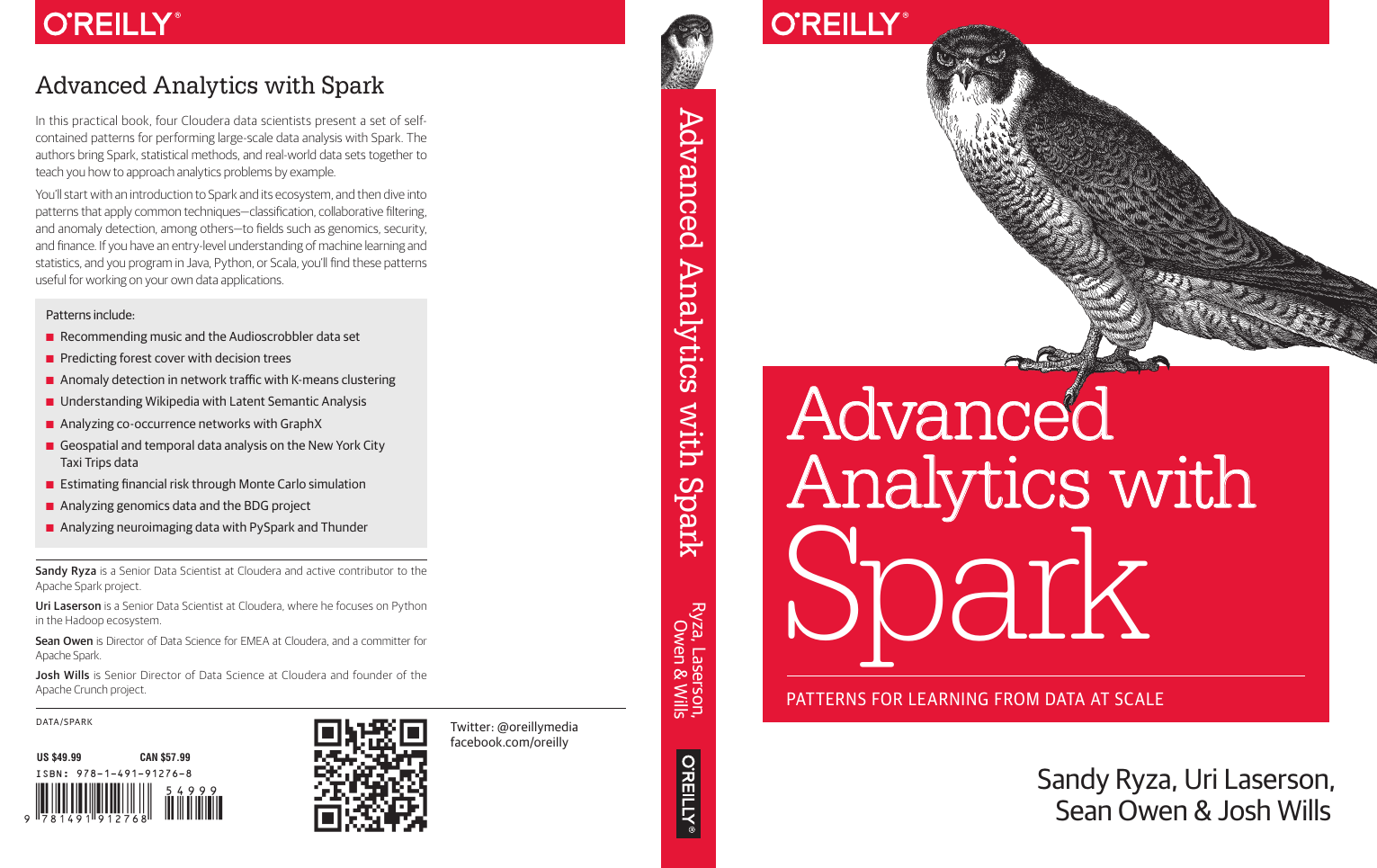
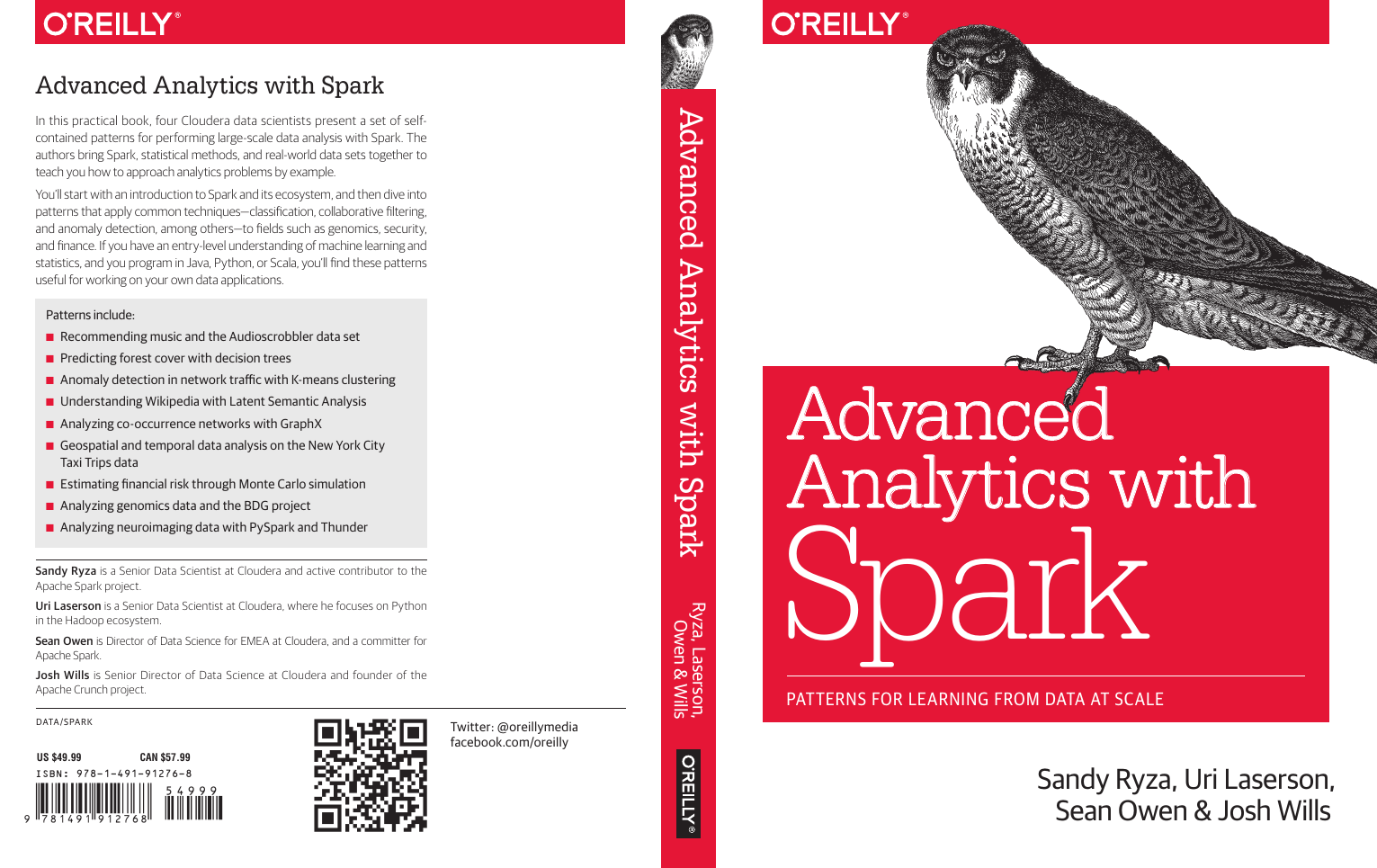
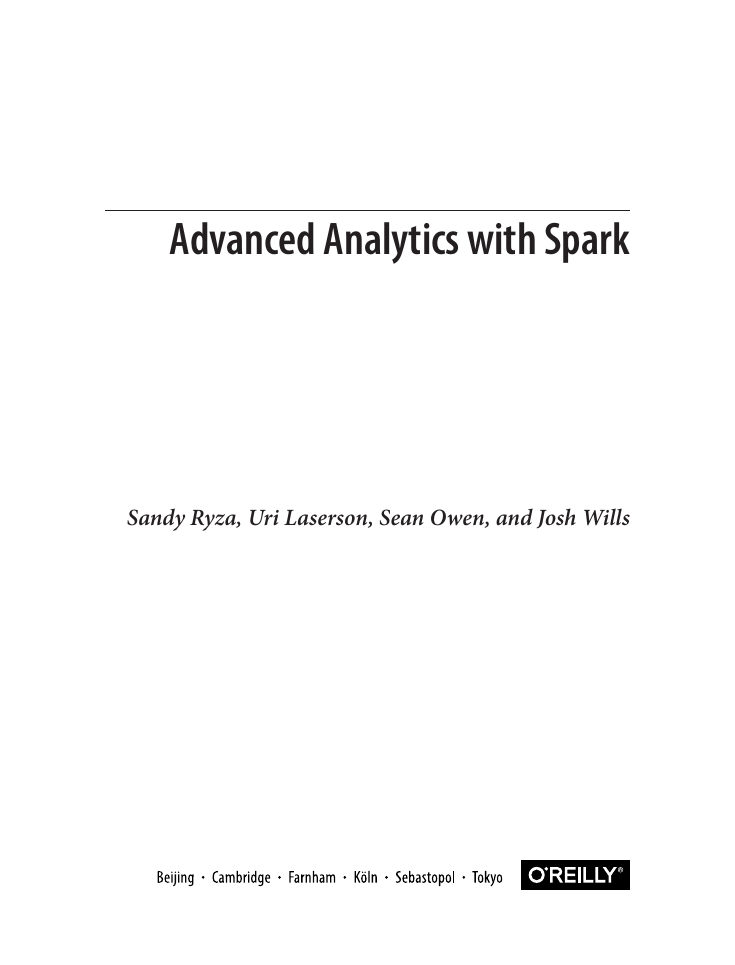

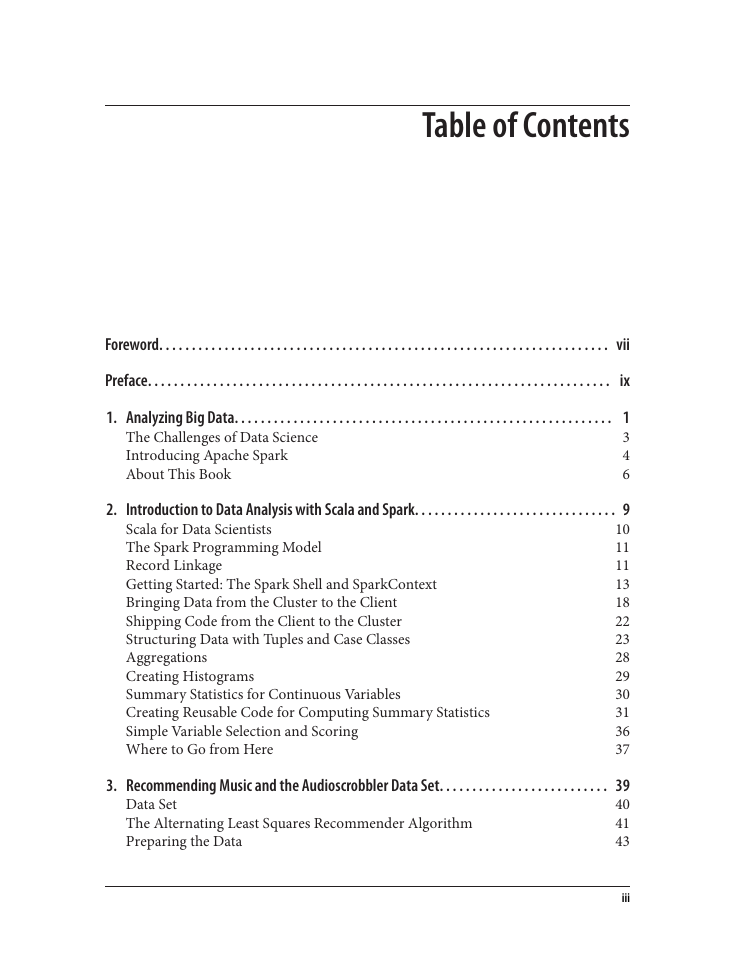
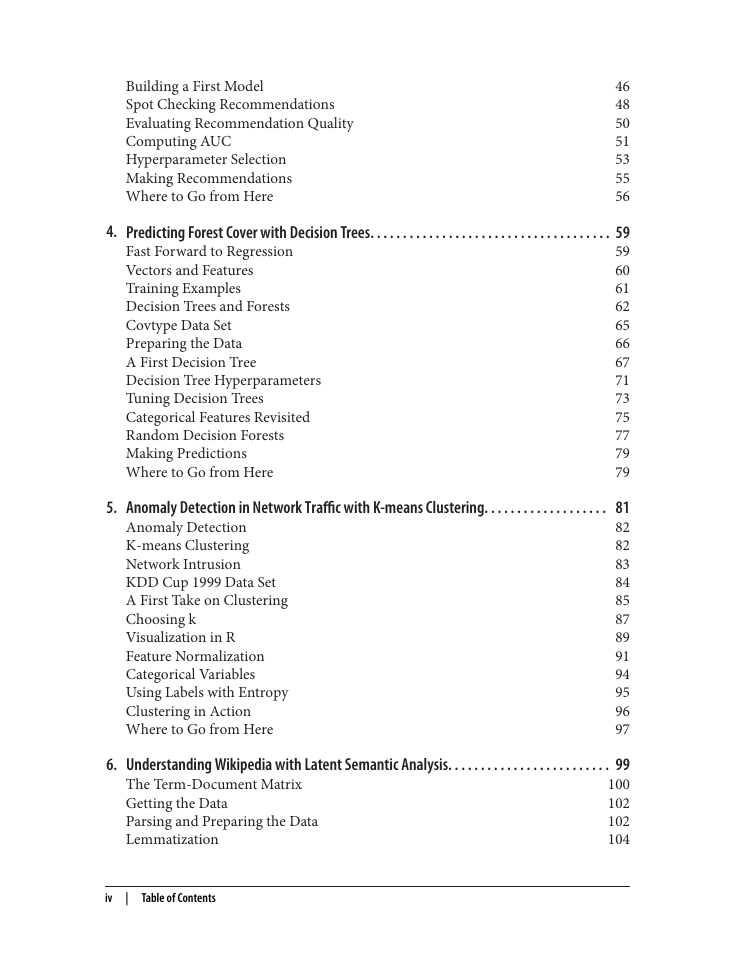
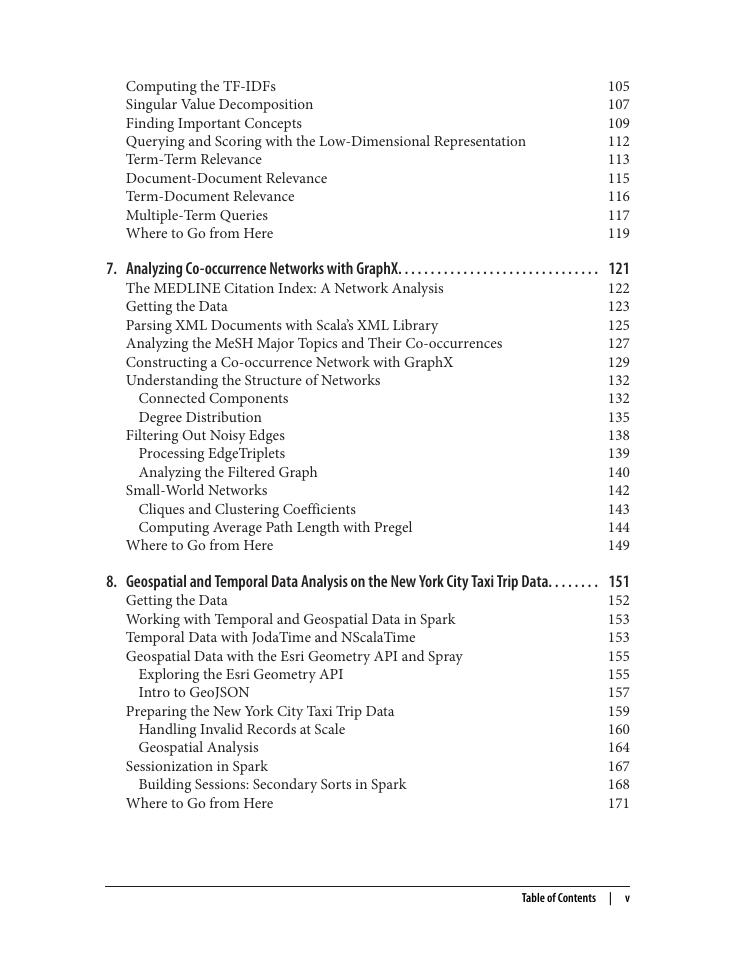
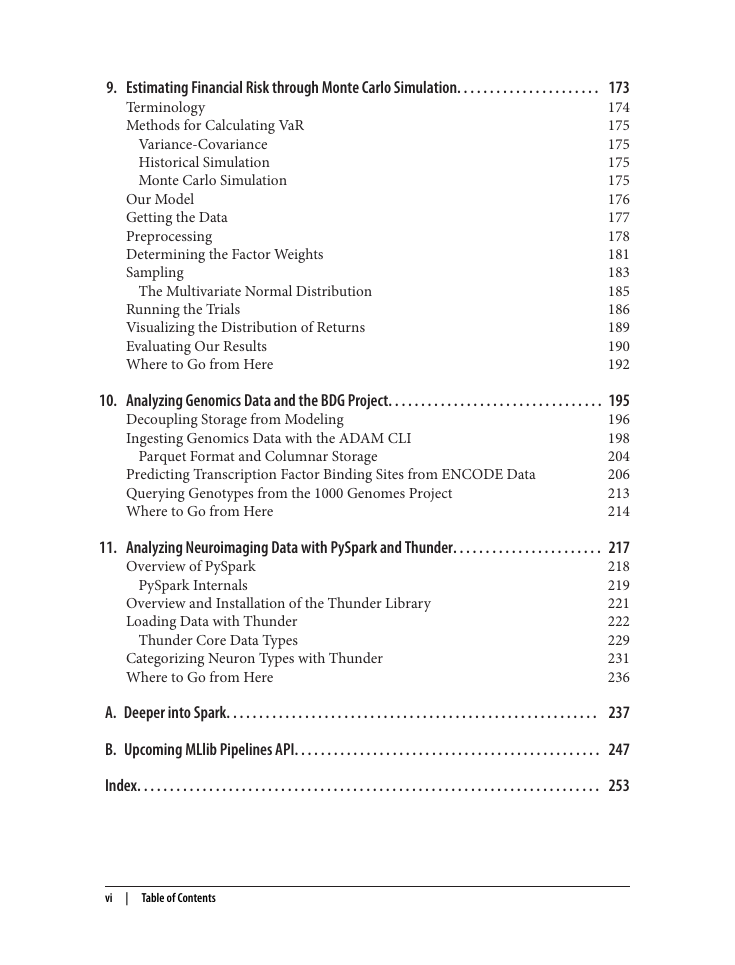








 2023年江西萍乡中考道德与法治真题及答案.doc
2023年江西萍乡中考道德与法治真题及答案.doc 2012年重庆南川中考生物真题及答案.doc
2012年重庆南川中考生物真题及答案.doc 2013年江西师范大学地理学综合及文艺理论基础考研真题.doc
2013年江西师范大学地理学综合及文艺理论基础考研真题.doc 2020年四川甘孜小升初语文真题及答案I卷.doc
2020年四川甘孜小升初语文真题及答案I卷.doc 2020年注册岩土工程师专业基础考试真题及答案.doc
2020年注册岩土工程师专业基础考试真题及答案.doc 2023-2024学年福建省厦门市九年级上学期数学月考试题及答案.doc
2023-2024学年福建省厦门市九年级上学期数学月考试题及答案.doc 2021-2022学年辽宁省沈阳市大东区九年级上学期语文期末试题及答案.doc
2021-2022学年辽宁省沈阳市大东区九年级上学期语文期末试题及答案.doc 2022-2023学年北京东城区初三第一学期物理期末试卷及答案.doc
2022-2023学年北京东城区初三第一学期物理期末试卷及答案.doc 2018上半年江西教师资格初中地理学科知识与教学能力真题及答案.doc
2018上半年江西教师资格初中地理学科知识与教学能力真题及答案.doc 2012年河北国家公务员申论考试真题及答案-省级.doc
2012年河北国家公务员申论考试真题及答案-省级.doc 2020-2021学年江苏省扬州市江都区邵樊片九年级上学期数学第一次质量检测试题及答案.doc
2020-2021学年江苏省扬州市江都区邵樊片九年级上学期数学第一次质量检测试题及答案.doc 2022下半年黑龙江教师资格证中学综合素质真题及答案.doc
2022下半年黑龙江教师资格证中学综合素质真题及答案.doc